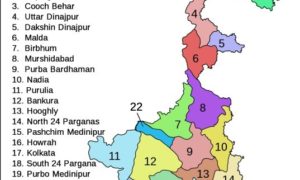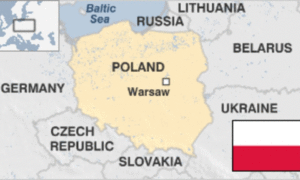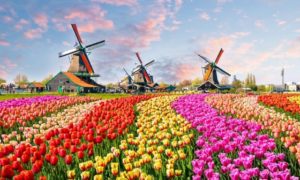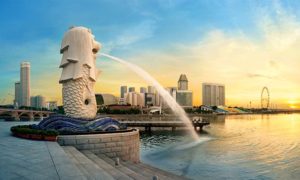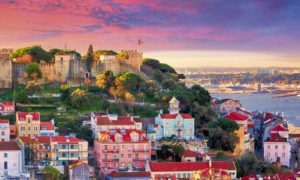Travel to Germany | Germany Points of Interest
Want to know about the best cities or places in Germany you can visit. Then read below for a great introduction of cities and best places in Germany along with a list of must see places in the cities you visit. If you plan your next trip to Germany then you must check on the best ways to get around the city and to the best places in Germany. Germany is a country well known for the World War II history and also for Oktoberfest. It is country filled with Europe’s most beautiful sceneries, castles, historic sites and lively party sceneries. Germany is located in the heart of Europe and is one of the Europe’s most powerful economies. Let us see an overview of top 56 best travel places in Germany.
1.Berlin
Berlin is a federal state and is also a capital of Germany. The city is widely linked with the history of World War II and also a former division of the west and East Germany by the berlin wall during the times of cold war. Since the fall of this historic wall in 1989, the unified city is now vast and is diverse in the ethnic group and is abundant in attractions, sightseeing, sports, nightlife, culture and the museums. It is one of most cosmopolitan cities in Germany that is a houses architecture, nightlife and art. Things you mustn’t miss in berlin: • Brandenburg Gate or Brandenburger Tor • Memorial of the Berlin Wall • Museum Island or Museumsinsel
2. Munich
Munich strongly displays the Bavarian charm. It is a place for all the beer fanatics as it houses the Hofbräuhaus, a hops heaven which is being in the production of good beer since 1589. During the famous Oktoberfest, the drinking has become legendary as there is a celebration of the local beers and local German foods. Go to Olympia park and emulate some of the world class athletes. This is also a place that houses Olympic ice rink that will make you feel like a real champion. For people who like watching stuff and gawking at stuff, you must visit the promenade of Marienplatz which contains the Glockenspiele of City Hall. Things you mustn’t miss in Munich: • English Garden • Marienplatz • Deutsches Museum
3. Hamburg
The second largest city in Germany and next to berlin in population, the Hamburg is a city that is a home to one of Europe’s biggest harbors. There are many waterways and canals in the city and one stroll among these waterways will tell you exactly why it is called the “Venice of the North”. You must not miss a trip to the local fish market and the merchant’s district which is marked for its red brick architecture that is very imposing. You can also get a fine dining experience in the place. You must visit the red light district or Reeperbahn. Things you mustn’t miss in Hamburg: • MiniaturWunderland • Park Planten un Blomen • Hafen Hamburg
4. Neuschwanstein Germany:
Neuschwanstein houses the Neuschwanstein castle which is the most photographed areas in Germany and is also a famous tourist destination in Europe. It is nestled among the Bavarian Alps which are as breathtaking as the castle and is near to a town named Fussen. This castle also served as an inspiration for the walk Disney’s sleeping beauty’s castle.
5. Frankfurt Germany:
There is plenty you can see and do in Frankfurt, a 2000 year old German city which houses the gothic saint Bartholomeus Cathedral, which is a perseverant structure. This cathedral has been destroyed and been rebuilt twice since its construction, in 14th century. You can simply catch a screening in the German Film Museum or stroll through different exhibit halls in one of the many galleried of Frankfurt. You can also spend your time in the city by climbing on to the top of the main Tower for sweeping 360 degree views of this gorgeous city. Things you mustn’t miss in Frankfurt: • Staedel Museum • German Film Museum • Dialog Museum
6. Cologne
Cologne is a city with 2000 years of history and the visitors to this city will definitely find everything they want from roman towers to gothic looking churches and some fine examples of the modern architecture. The city also has a wide number of museums among which you must check out the Museum of applied art, the museum Ludwig and also the chocolate museum. There is also a gift shop at the latter which sells everything a chocolate lover can dream of. Things you mustn’t miss in Cologne: • Cologne Cathedral (Dom) • Museum Ludwig • KoelnTriangle
7. Heidelberg Germany:
Coming to the oldest universities in Germany, Heidelberg is the home. This city was hit hard with the 17th century wars and was rebuilt in the 18th century which is why you can see baroque buildings in the city. If you want a pleasant walk then stroll through the historic city center and gothic streets. Do not forget to look for the Heidelberg castle which is the heart of the city. You can see an 18th century beauty- a bridge and a student jail in the city- which was built in 16th century and is used to keep the mischievous students for 3 days to months. Things you mustn’t miss in Heidelberg: • Philosophers’ Way • Altstadt (Old Town) • Heidelberg Castle
8. Lubeck Germany:
Lubeck is one of the Germany’s largest Seaports and is located in the northern most state called Schleswig-Holstein. It was founded in the year 1143, and served as the capital seat for many centuries for the Hanseatic League. It was the first city that was damaged and bombed during the World War II. But still you can see the medieval architecture in the city which is why it is one of the popular tourist destinations in Germany.
9. Dusseldorf Germany:
Dusseldorf is the capital city of North Rhine and is also a regional economic power house which is straddling the banks of the river Rhine. You can find the city’s night life in the place called Altstadt and if you want to have a taste of the local dark beer then go to Altbier. Things you mustn’t miss in Dusseldorf: • Old Town/ Altstadt • Rhine Tower • Konigsallee
10. Stuttgart Germany:
Stuttgart is one of the Germany’s largest wine growing regions and is also a cultural junky place as it is filled with acclaimed ballets, opera and Philharmonic. If you are a fan of automobiles then visit the Mercedes Benz Museum. This is a festival friendly town and also houses the largest zoo in Europe and botanic garden, The Wilhelma. Things you mustn’t miss in Stuttgart: • Mercedes-Benz Museum • Palace Square • Koenigstrasse
More 46 Places to visit in Germany-
-
The Romantic Road
-
Dresden
-
Regensburg
-
The Mosel Valley
-
Görlitz
-
Bamberg
-
Berlin’s Brandenburg Gate
-
Cologne Cathedral (Kölner Dom)
-
The Black Forest
-
The Ultimate Fairytale Castle: Neuschwanstein
-
Miniatur Wunderland and the Historic Port of Hamburg
-
The Rhine Valley
-
Berlin’s Museum Island
-
Bamberg and the Bürgerstadt
-
Zugspitze Massif
-
The Island of Rügen
-
Königssee (King’s Lake)
-
Rothenburg ob der Tauber
-
Sanssouci Park and Palace, Potsdam
-
Insel Mainau: The Flower Island of Lake Constance
-
The Berlin Wall
-
Rakotzbrücke (Rakotz Bridge), Gablenz, Saxony
-
Wiblingen Abbey, Ulm, Baden-Württemberg
-
Lake Königssee, Berchtesgadener Land, Bavaria
-
Rothenburg ob der Tauber, Franconia, Bavaria
-
Bastei Bridge, Elbe River, Saxon Switzerland
-
Neuschwanstein Castle, Hohenschwangau, Bavaria
-
Zugspitze, Wetterstein Mountains, Bavaria
-
Pilgrimage Church of Wies, Steingaden, Bavaria
-
Sylt, Frisian Islands, North Sea
-
Hängeseilbrücke Geierlay (Geierlay Suspension Bridge), Hunsrück Mountains, Rhineland-Palatinate
-
Residenz Munchen, Munich
-
Rügen Island, Baltic Sea
-
Görlitz, Saxony
-
Harz National Park, Lower Saxony
-
Bamberg, Upper Franconia, Bavaria
-
Lake Schrecksee, Bavarian Alps
-
Lichtenstein Castle, Baden-Württemberg
-
“Saar Loop” at Mettlach, Saar River
-
Zwinger Palace, Dresden
-
Blautopf, Blaubeuren, Baden-Wurttemberg
-
Tüchersfeld, Pottenstein, Bavaria
-
Partnach Gorge, Garmisch-Partenkirchen, Bavaria
-
Regensburg
-
Lake Constance
-
Leipzig
- The Romantic Road
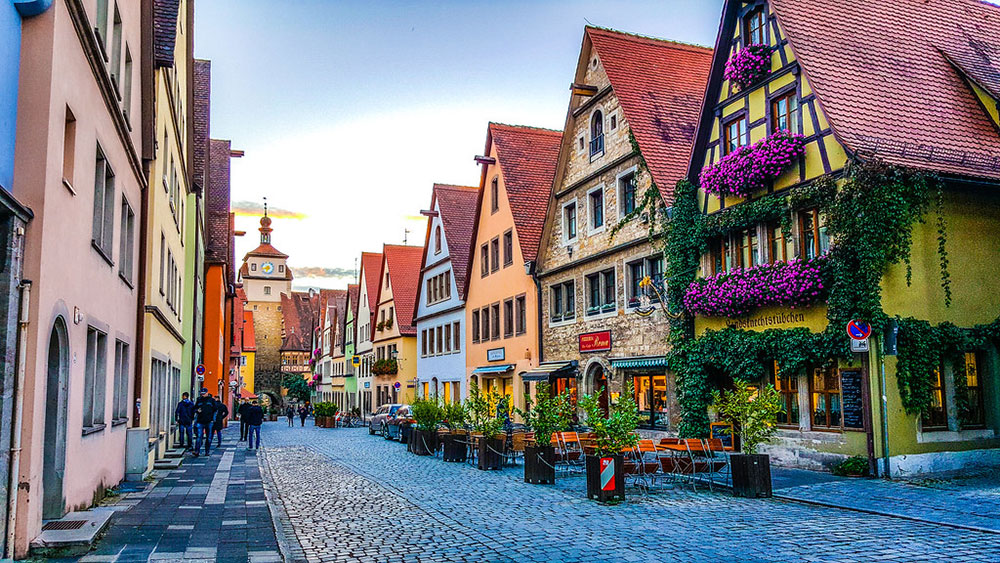
The German Romantic Road is one of the most popular tourist attractions in Bavaria and Baden-southern Württemberg’s districts. The Romantic Road concept is similar to the British “ploughman’s lunch,” with a Roman path connecting the participating cities and some spectacular medieval sights to the north.
- Dresden
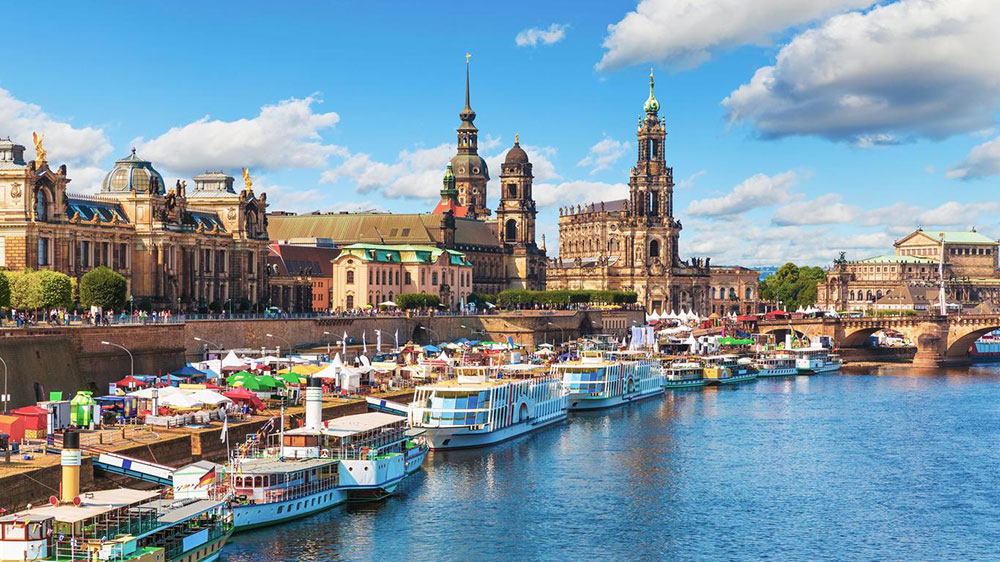
Dresden is the capital and second most populous city of the German state of Saxony, behind Leipzig. It is Germany’s 12th most populated city, its fourth most extensive by area, and the third most populous city in former East Germany, after Berlin and Leipzig.
- Regensburg
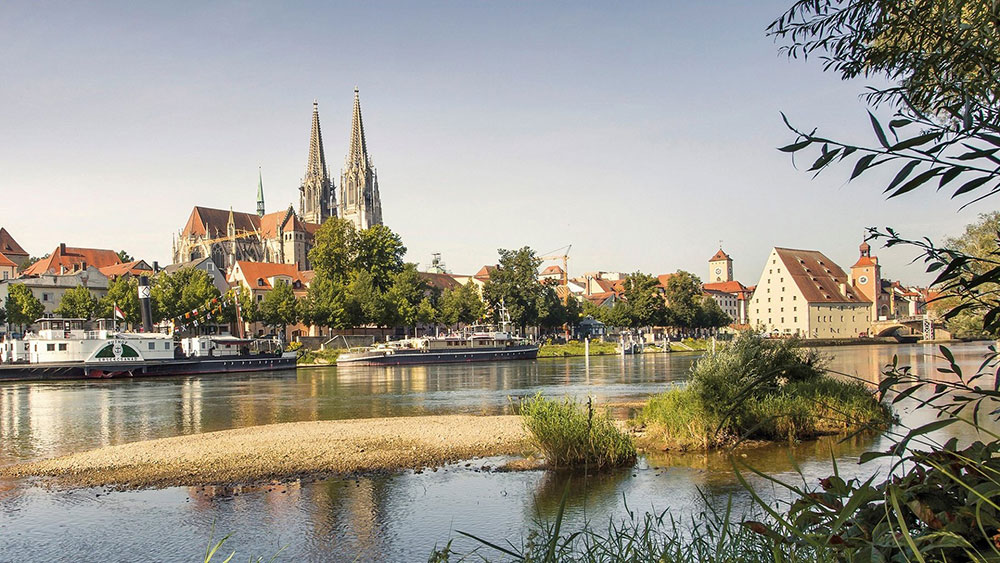
The churches, aristocratic residences, towers, Roman walls, and other ancient monuments you see are authentic. Despite its well-preserved 2,000-year-old past, Regensburg is more than merely an architectural theme park.
- Moselle Valley
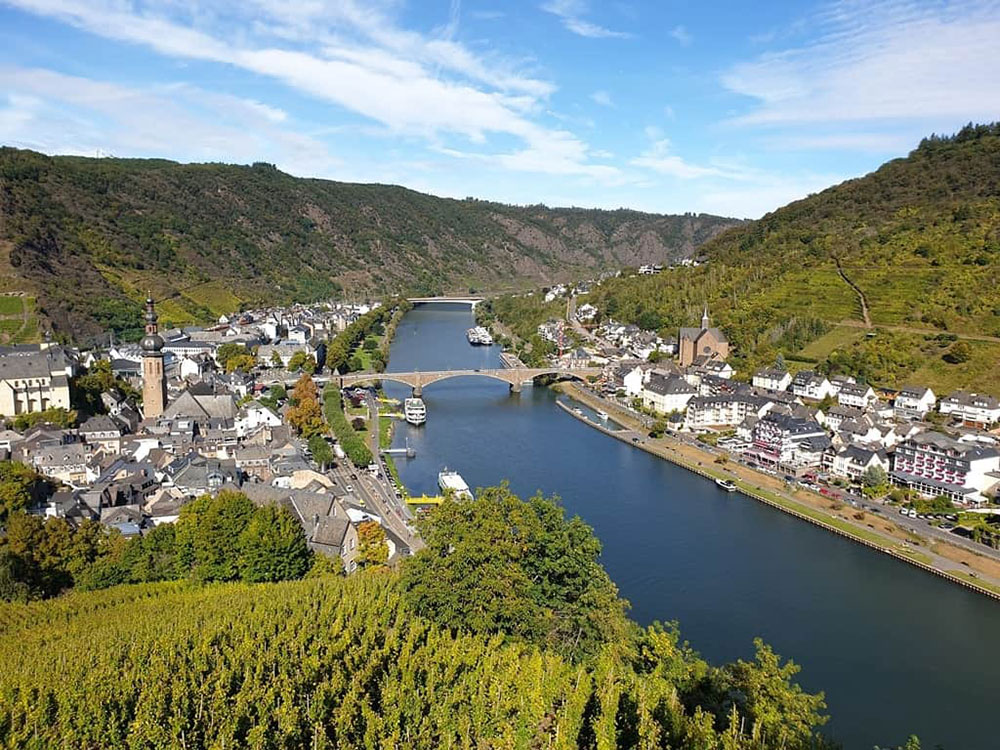
The Moselle Basin (German: Moseltal) is a region in north-eastern France, south-western Germany, and eastern Luxembourg centered on the Moselle River valley. The Moselle flows through and along the boundaries of three nations, draining a fourth, Belgium.
- Görlitz
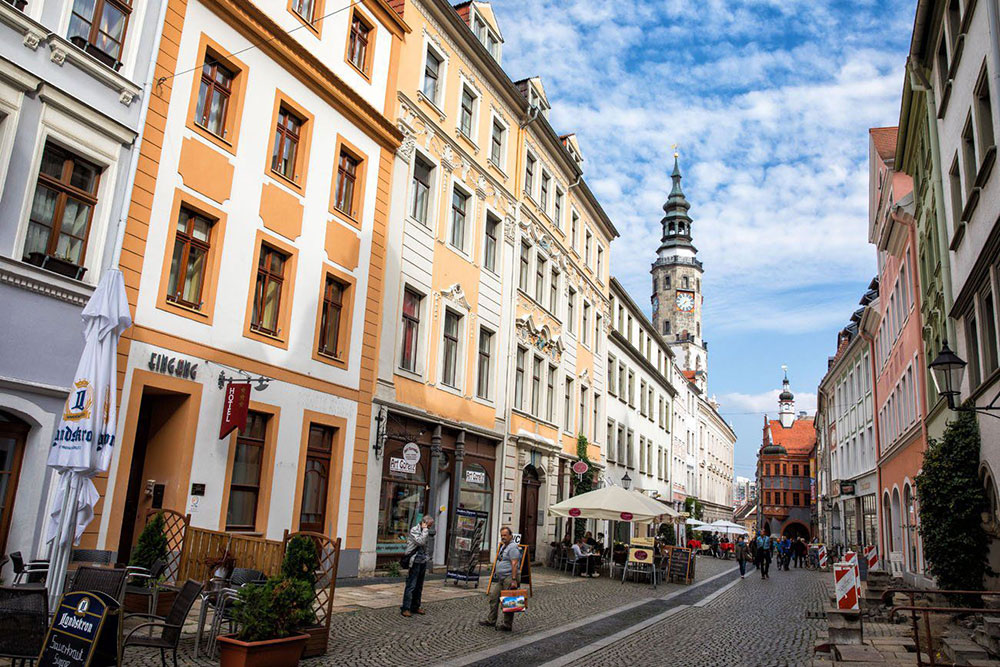
Görlitz is a town in eastern Germany on the border with Poland. It’s famous for its well-preserved ancient town, where buildings from various ages display a variety of architectural styles.
- Bamberg
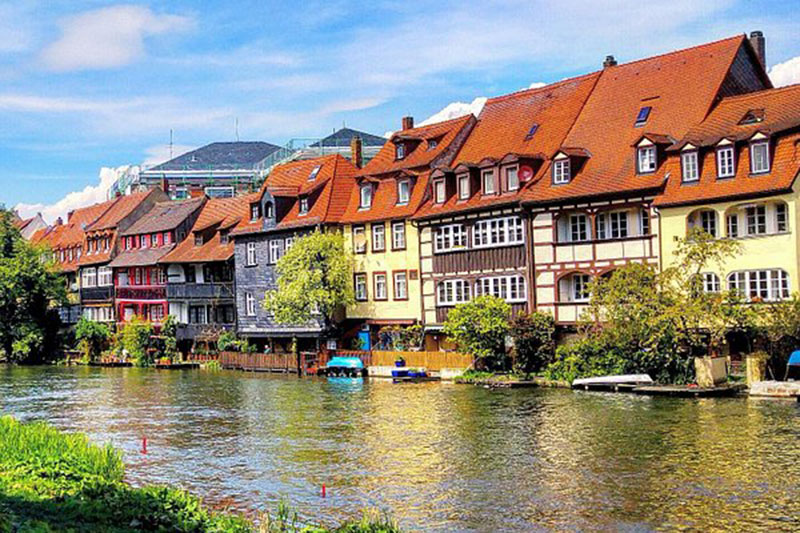
Bamberg was added to the UNESCO World Heritage List in 1993 for its medieval layout and well-preserved ancient structures. The Market Gardeners’ District, together with the City on the Hills and the Island District, is an essential component of the World Heritage site.
- Brandenburg Gate
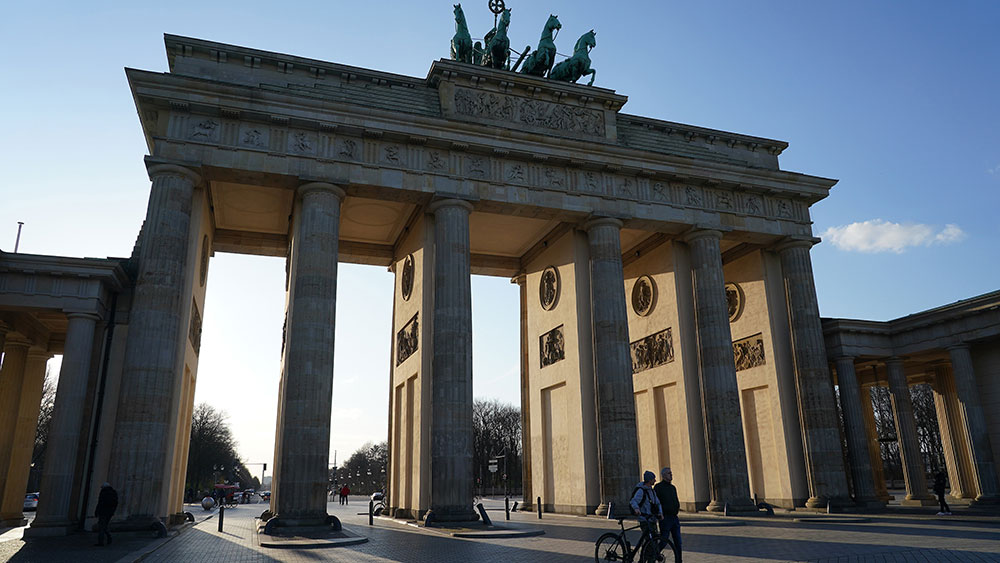
The Brandenburg Gate is one of Berlin’s most prominent landmarks, a landmark, and an emblem with a history dating back over two centuries. The enormous sandstone gate in the middle of the city features on almost every tourist’s selfie.
- Cologne Cathedral
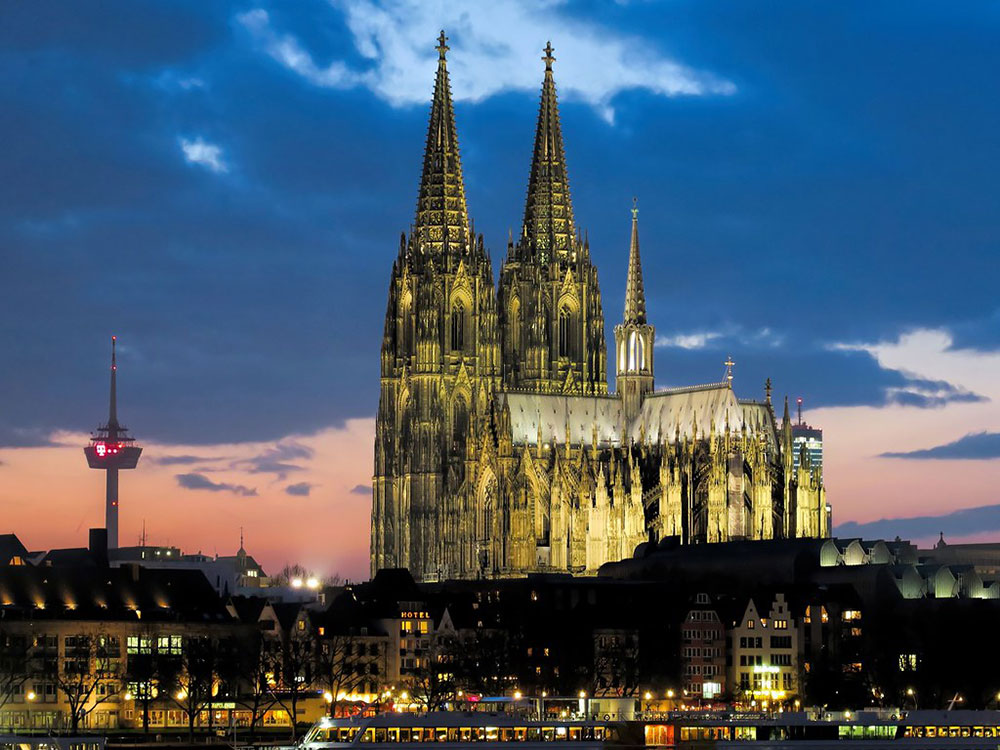
It houses the Archbishop of Cologne and the Archdiocese of Cologne’s administration. It is a well-known landmark of German Catholicism and Gothic architecture that was designated a UNESCO World Heritage Site in 1996.
- The Black Forest
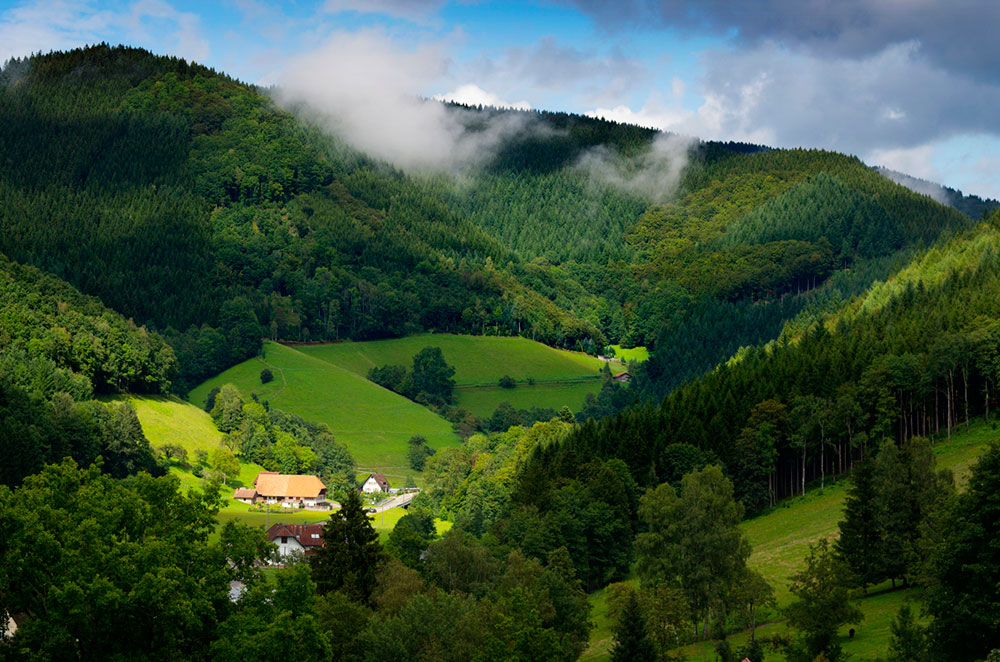
The Black Forest is a hilly area near the French border in southwest Germany. It is typically connected with the Brothers Grimm fairy tales due to its deep, evergreen woods and charming towns. Freiburg, the region’s central town, is packed with Gothic architecture and surrounded by vineyards.
- Neuschwanstein Castle
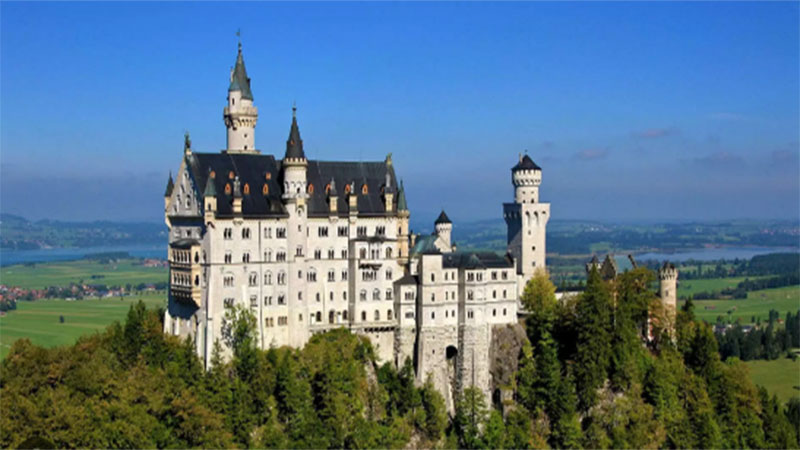
Neuschwanstein Castle, often known as the New Swan Stone Castle, is located in Bavaria, Germany. It was first known as New Hohenschwangau Castle because it was intended to be a spectacular reproduction of Hohenschwangau Castle, where Ludwig II spent his infancy.
- Miniatur Wunderland
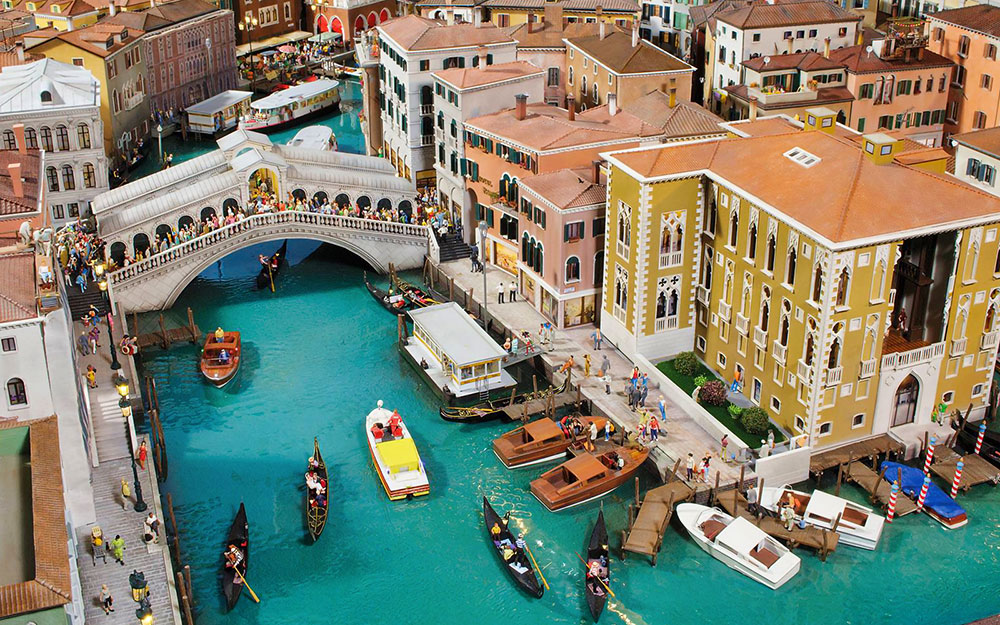
Hamburg’s smaller copy is 200 square meters in size. This lively metropolis is home to approximately 50,000 ‘Wunderländer’ (locals) and includes Hamburg’s key attractions such as the Michel and Hagenbecks Tierpark zoo and Hamburg Hauptbahnhof, where 1,500 trains arrive daily.
- Rhine Valley
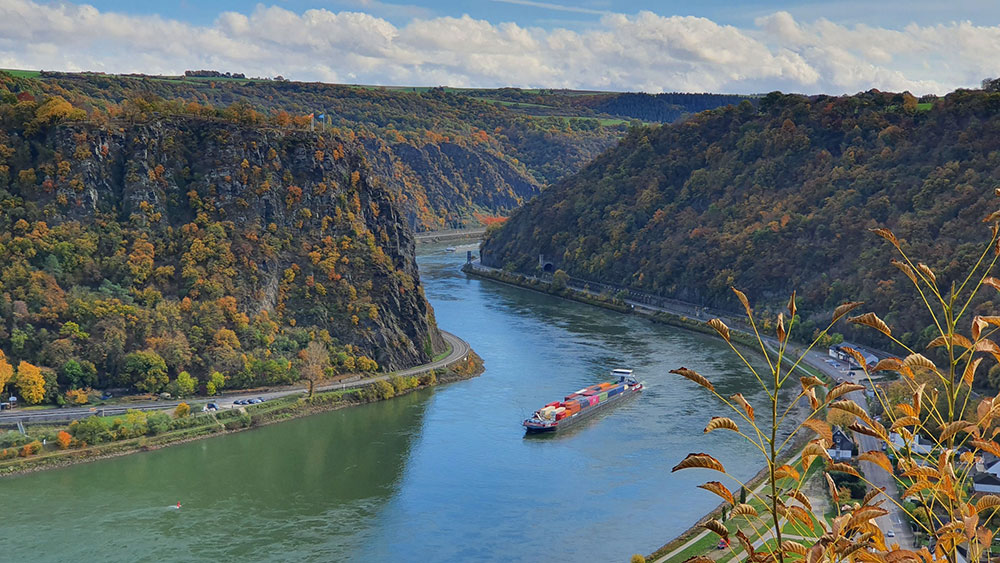
The Middle Rhine was the medieval Holy Roman Empire’s heart, and the region attracted considerable creativity, innovation, and craftsmanship. It was formerly one of the most significant commercial locations in Europe. Discover the history, tales, food, and wine that make the Romantic Rhine Valley one of Europe’s most recognized romantic settings.
- Berlin’s Museum Island
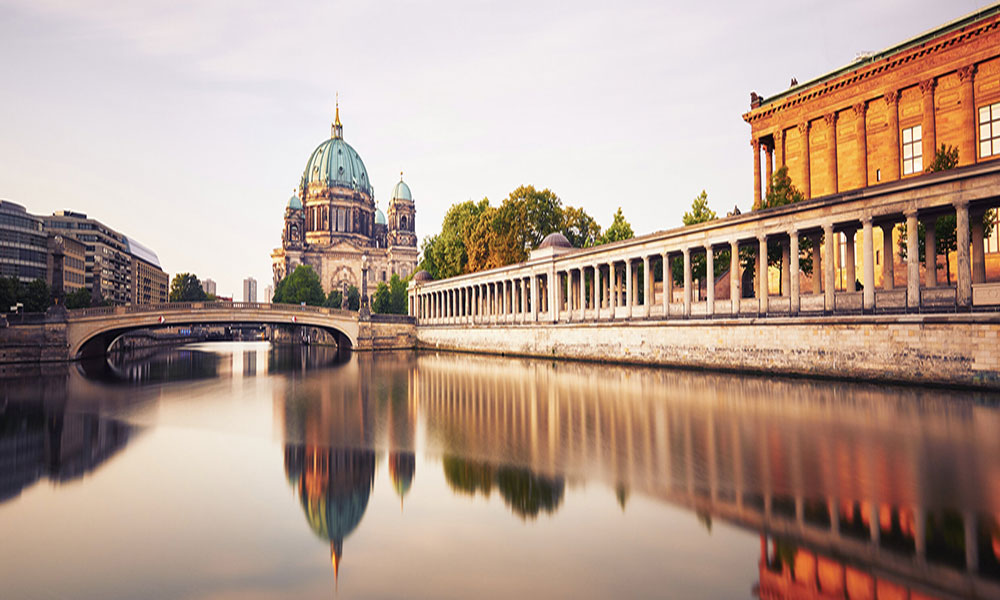
The Museum Island is a museum complex in Berlin’s historic center, located on the northern extremity of Spree Island. It is one of the most frequented attractions in Germany’s capital and one of Europe’s most prominent museum sites. Museum Island was named a UNESCO World Heritage Site in 1999.
- BAMBERG AND THE BÜRGERSTADT
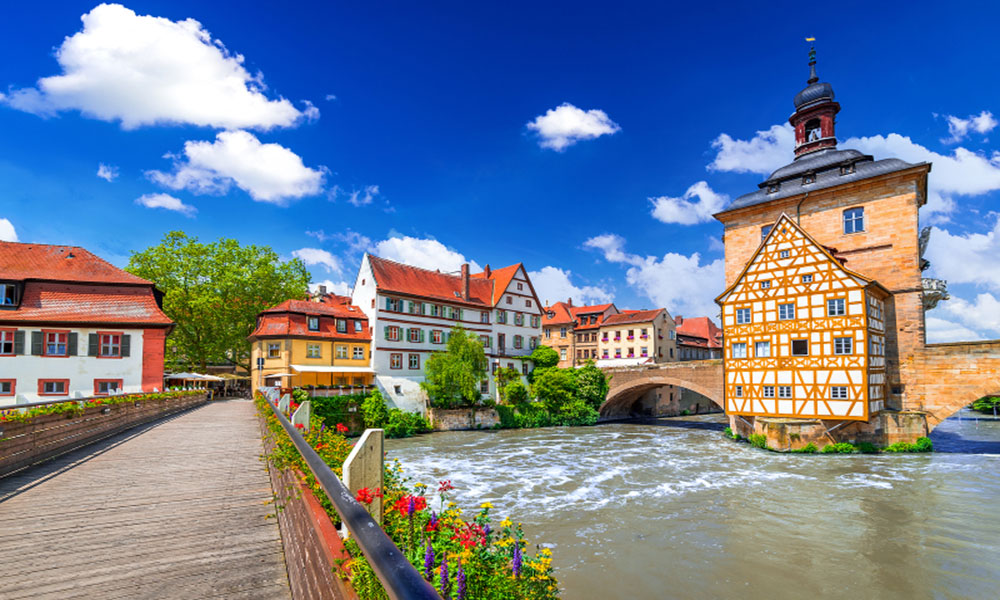
Bamberg, located in the Regnitz valley, where the river separates into two branches, is one of Germany’s most picturesque medieval cities. The magnificent Bürgerstadt may be found between the two river branches.
- Zugspitze Massif
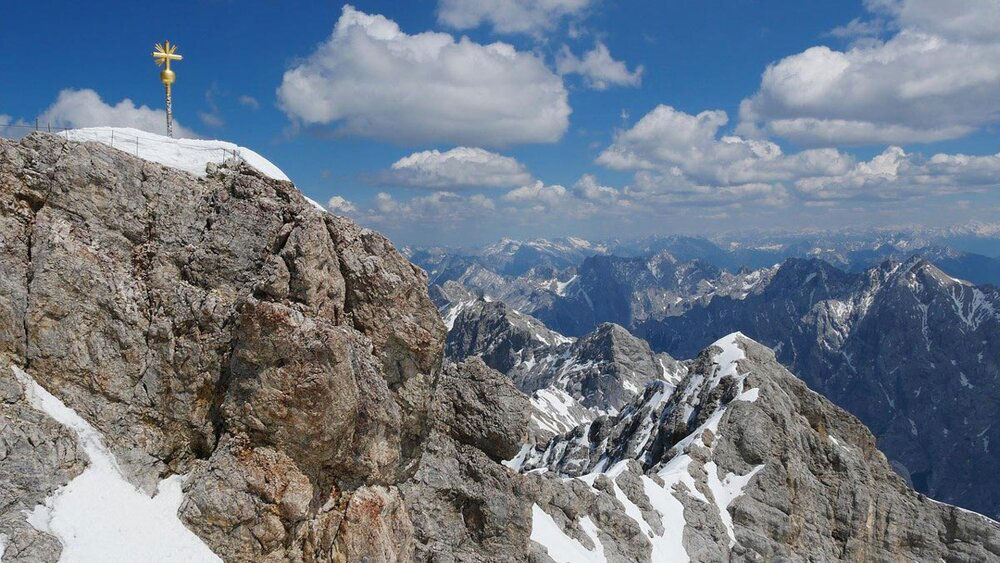
The Zugspitze is part of the Wetterstein mountain range, which is located in the northern limestone Alps. The Zugspitze massif, which comprises the surrounding mountains, includes the highest peak in Germany. Josef Naus was the first climber to appreciate this vista. The best spot to go.
- The islands of Rügen
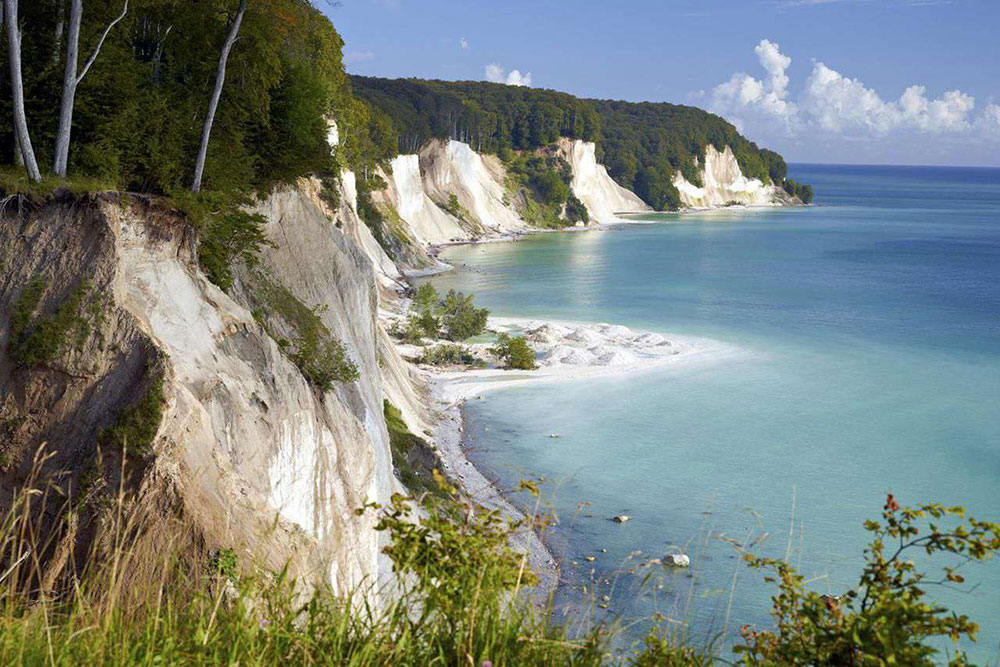
Rügen is a German Baltic Sea island. It is famous for its beaches and white chalk cliffs such as the King’s Chair on the Jasmund peninsula. The King’s Chair contains an observation platform and a tourist center with exhibits about Rügen’s natural history. It is a component of the Jasmund National Park, which is notable for its ancient beech trees and white-tailed eagles.
- Königssee
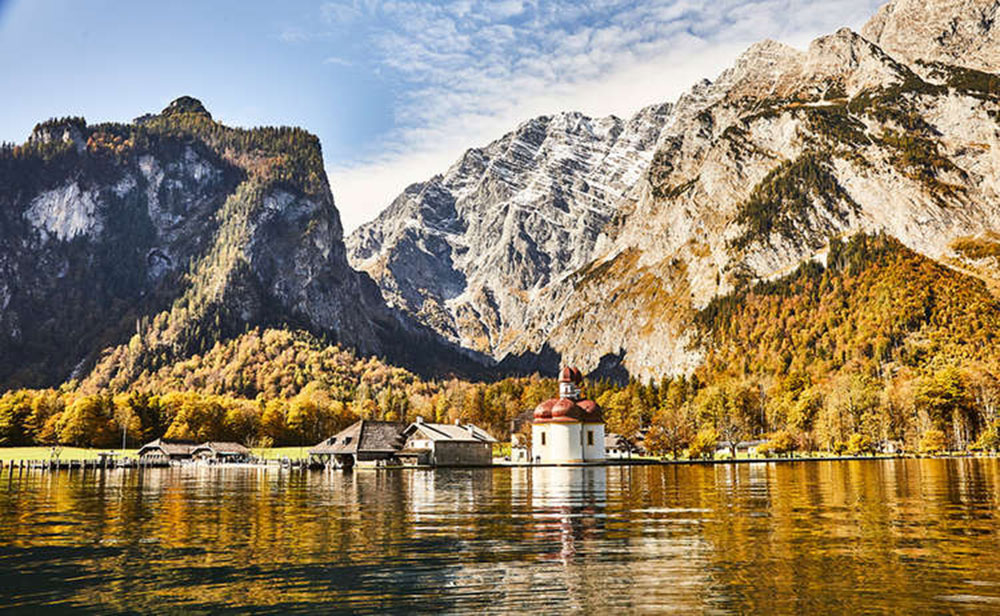
The Königssee is a natural lake near the Austrian border in the far southeast Berchtesgadener Land of the German state of Bavaria. The Berchtesgaden National Park encompasses the majority of the lake.
- Rothenburg ob der Tauber
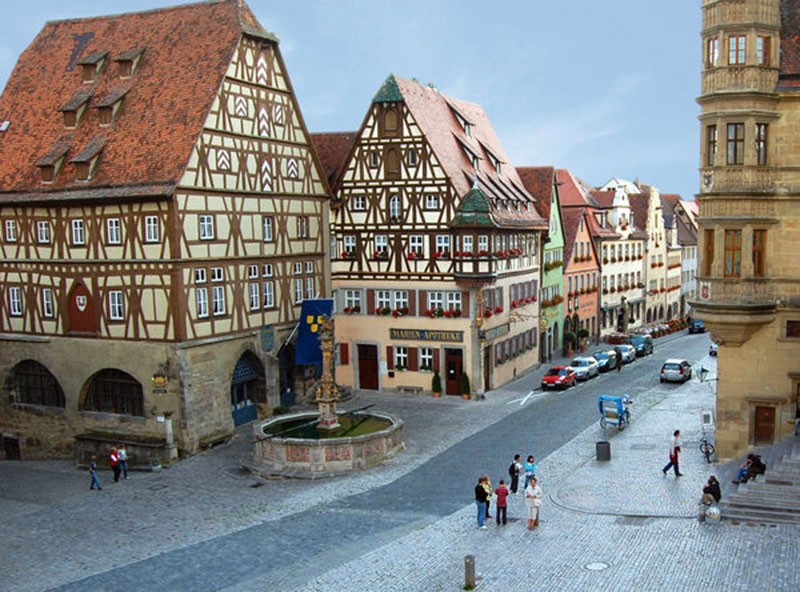
Rothenburg ob der Tauber is a Bavarian town notable for its medieval architecture. The cobblestone streets of the old city are lined with half-timbered buildings. The town walls have several intact gatehouses and towers, as well as a covered promenade on top.
- SANSSOUCI PARK AND PALACE, POTSDAM
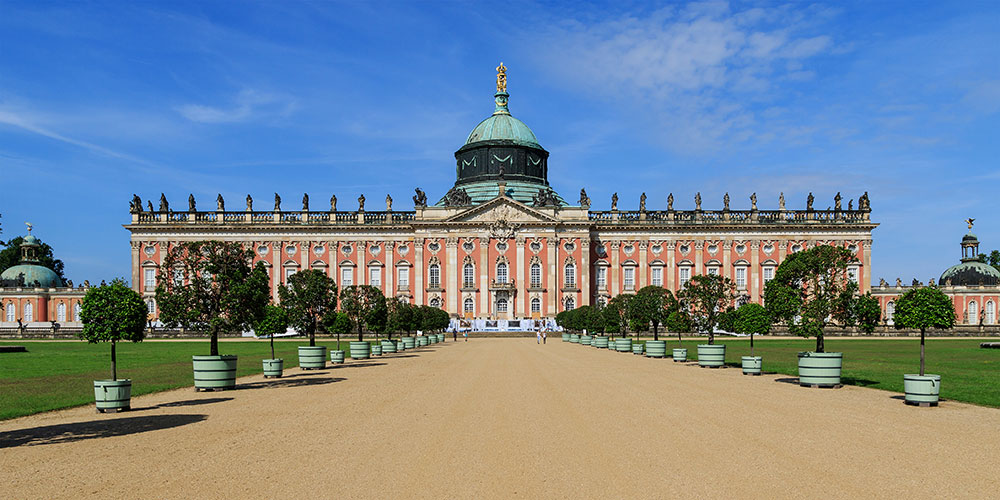
The Potsdam and Berlin Palaces and Parks (Sanssouci) are self-contained ensembles of architectural and landscape gardening from the 18th and 19th centuries. This exceptional aesthetic ensemble derives from the work of Northern Germany’s most notable architects and landscape gardeners of the time.
- INSEL MAINAU: THE FLOWER ISLAND OF LAKE CONSTANCE
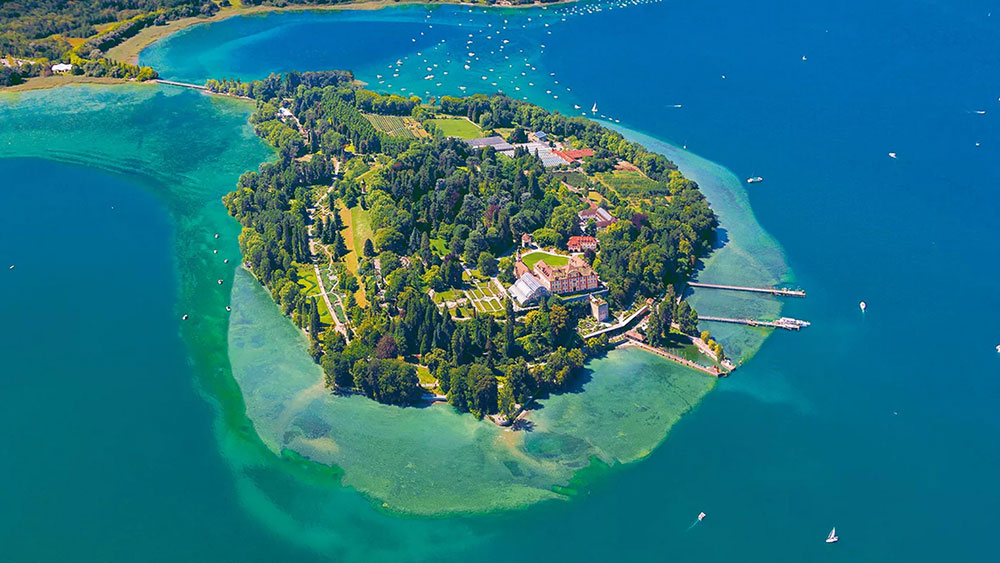
The lovely Insel Mainau, often known as the Flower Island (Blumen Insel Mainau in German), is located in Germany’s Lake Constance. It is around 111 acres in size (45 hectares). In the spring, millions of flowers bloom, including tulips, rhododendrons, roses, dahlias, and various exotic species.
- The Berlin Wall
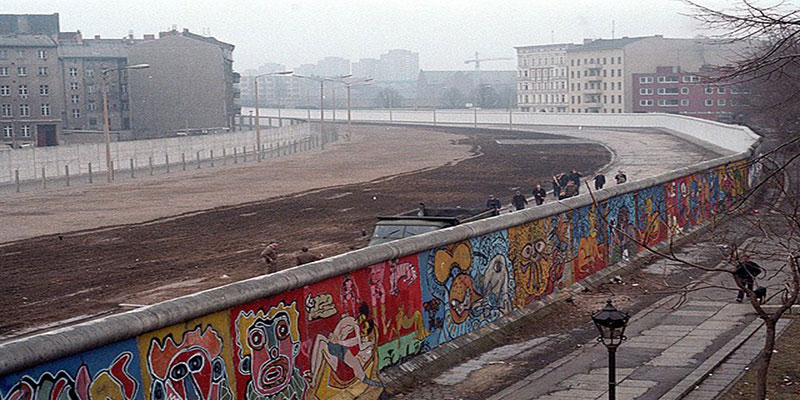
During Berlin’s split, the Berlin Wall stretched along the whole southern boundary of Bernauer Straße. An open-air display with historical audio and video material, a tourist center with movies, and an observation tower, is currently housed in part of this old border strip, together with the watchtower.
- Rakotzbrücke Bridge
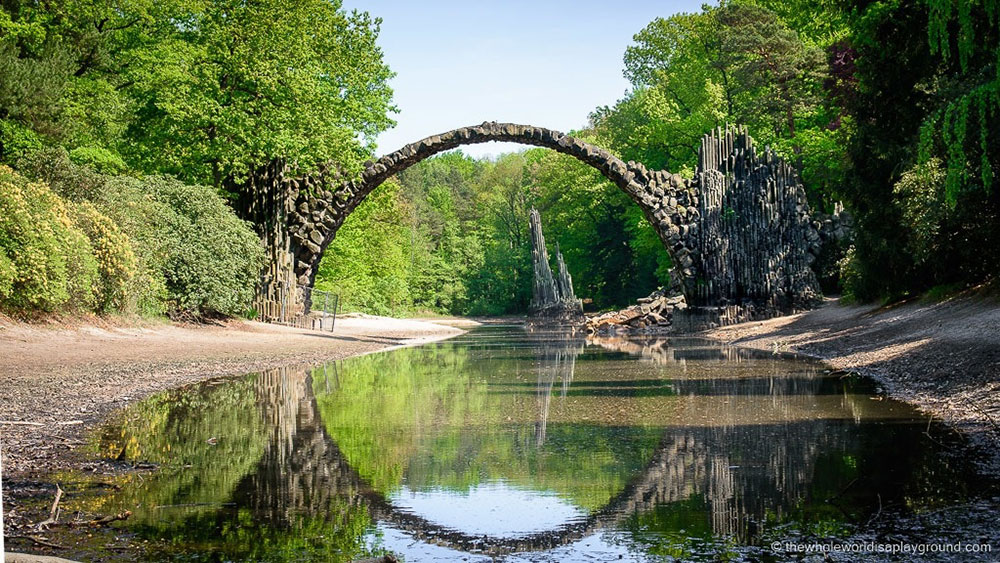
The Rakotzbrücke Bridge, often known as the Devil’s Bridge due to its tricky aspect, is located in the middle of Saxony. The ends of the bridge are constructed by slender rock spires with octagonal basalt columns, making such a perfect arch that the devil himself appears to have been made.
- WIBLINGEN ABBEY, ULM, BADEN-WÜRTTEMBERG
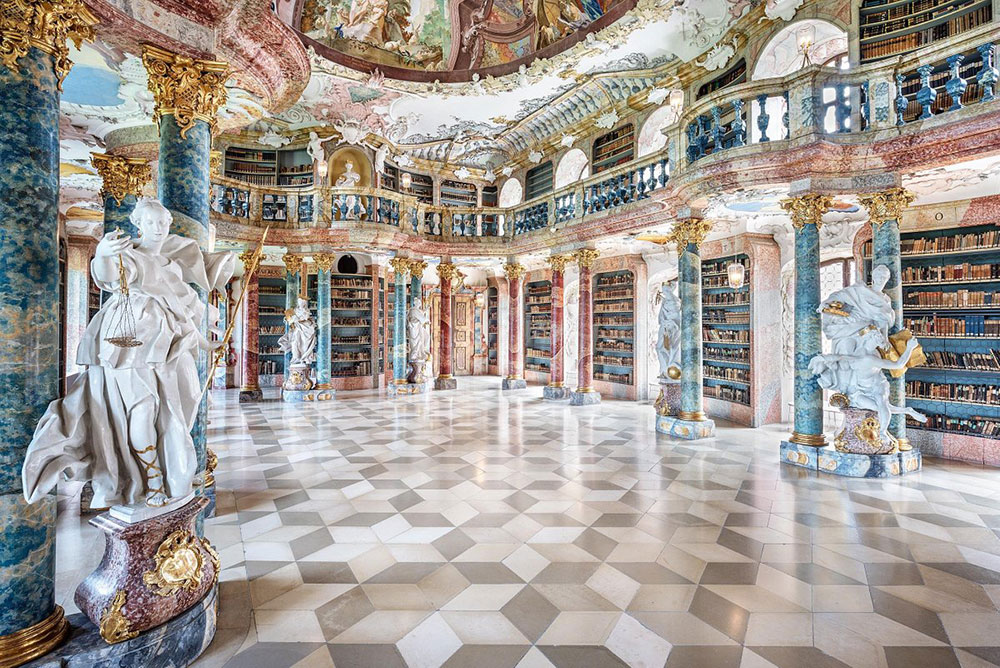
Wiblingen Abbey was a Benedictine abbey that was eventually converted into barracks. Today, its buildings contain numerous departments of the University of Ulm’s medical faculty. An abbey in southern Germany, located south of Ulm. It includes a lovely church and a well-known library with many embellishments and a painted ceiling.
- LAKE KÖNIGSSEE, BERCHTESGADENER LAND, BAVARIA
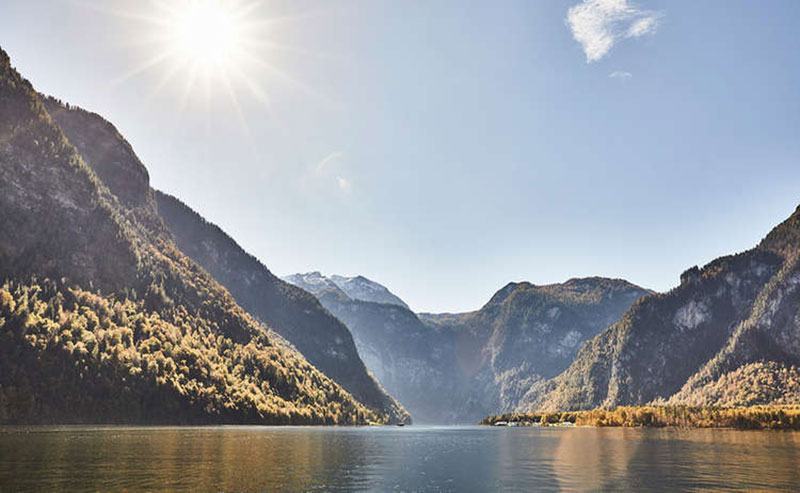
The Königssee is a natural lake near the Austrian border in the far southeast Berchtesgadener Land of the German state of Bavaria. The Berchtesgaden National Park encompasses the majority of the lake.
- Rothenburg ob der Tauber
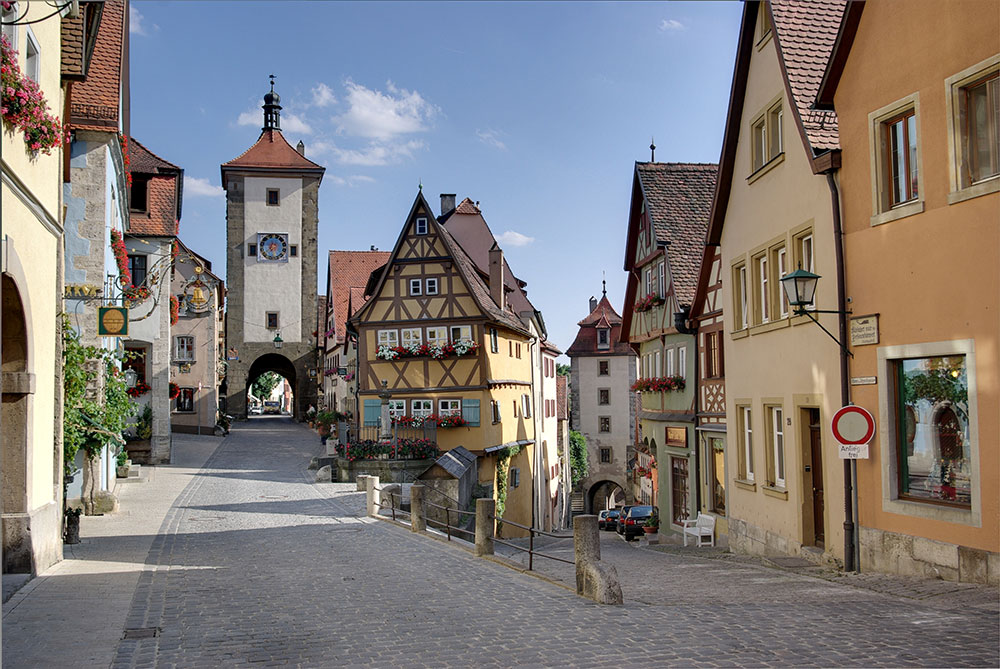
Rothenburg ob der Tauber is a town in the Mittelfranken district of Ansbach in the Franconia region of Bavaria, Germany. It is well-known for its well-preserved medieval old town, which attracts tourists from all over the world.
- BASTEI BRIDGE, ELBE RIVER, SAXON SWITZERLAND
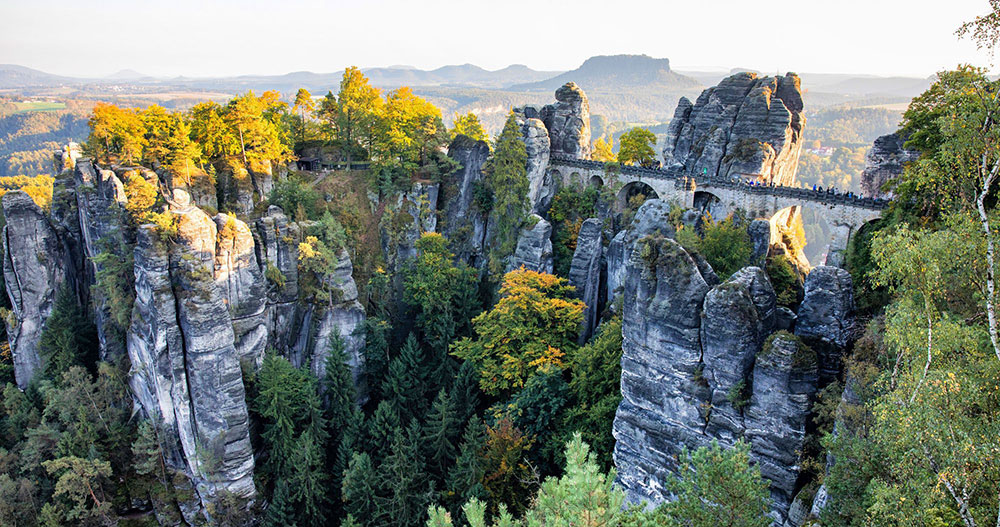
Due to the increasing growth of tourists, the wooden bridge was rebuilt in 1851 with a sandstone bridge, which is still standing today. It spans a valley 40 meters deep and is 76.5 meters long. The Bastei eventually became the primary attraction of Saxon Switzerland by the end of the nineteenth century.
- NEUSCHWANSTEIN CASTLE, HOHENSCHWANGAU, BAVARIA
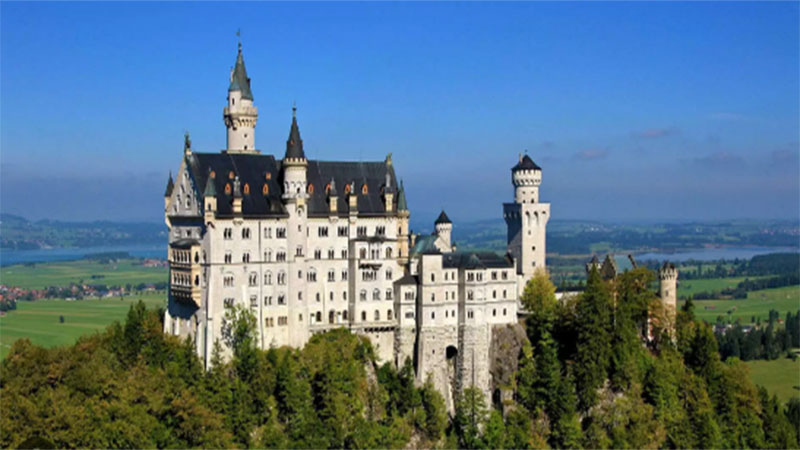
Neuschwanstein Castle is a historicist castle built in the nineteenth century on a steep hill above the town of Hohenschwangau near Füssen in southwest Bavaria, Germany. King Ludwig II of Bavaria commissioned the mansion as a retreat in honor of Richard Wagner.
- ZUGSPITZE, WETTERSTEIN MOUNTAINS, BAVARIA
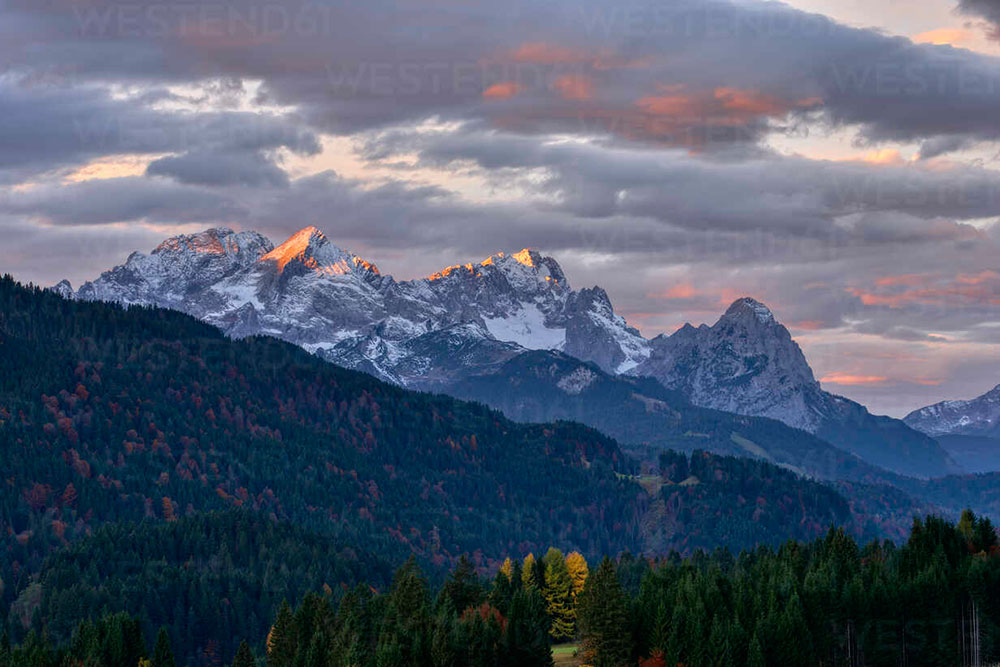
The Wetterstein mountains, often known as Wetterstein, are a mountain range in the Northern Limestone Alps of the Eastern Alps. It is a relatively small range located along the German-Austrian border between Garmisch-Partenkirchen, Mittenwald, Seefeld in Tirol, and Ehrwald.
- Pilgrimage Church of Wies

The synergy between art and nature is a distinguishing quality. The architect fused all art forms and methods employed – architecture, sculpture, painting, stucco work, carving, ironwork, etc. – into a flawless, cohesive whole in order to create a diaphanous spatial structure of light and form.
- SYLT, FRISIAN ISLANDS, NORTH SEA
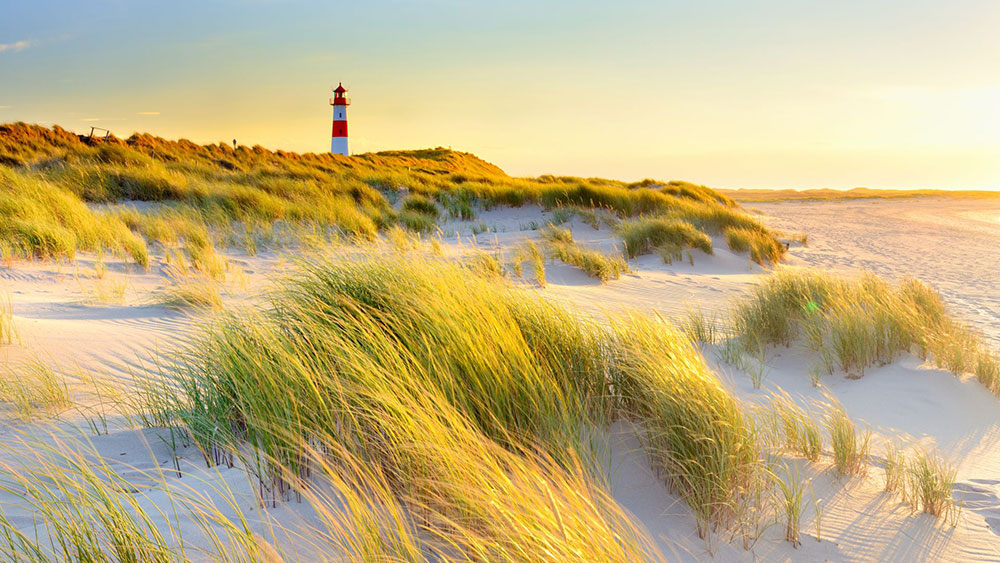
The Old Frisian House, built in the 1700s, includes a thatched roof and displays on pre-World War II island life. Denghoog is a neolithic passage cemetery surrounded by massive stone boulders. Naturgewalten, located to the north, is an interactive ecological museum featuring multimedia exhibits.
- Suspension bridge Geierlay
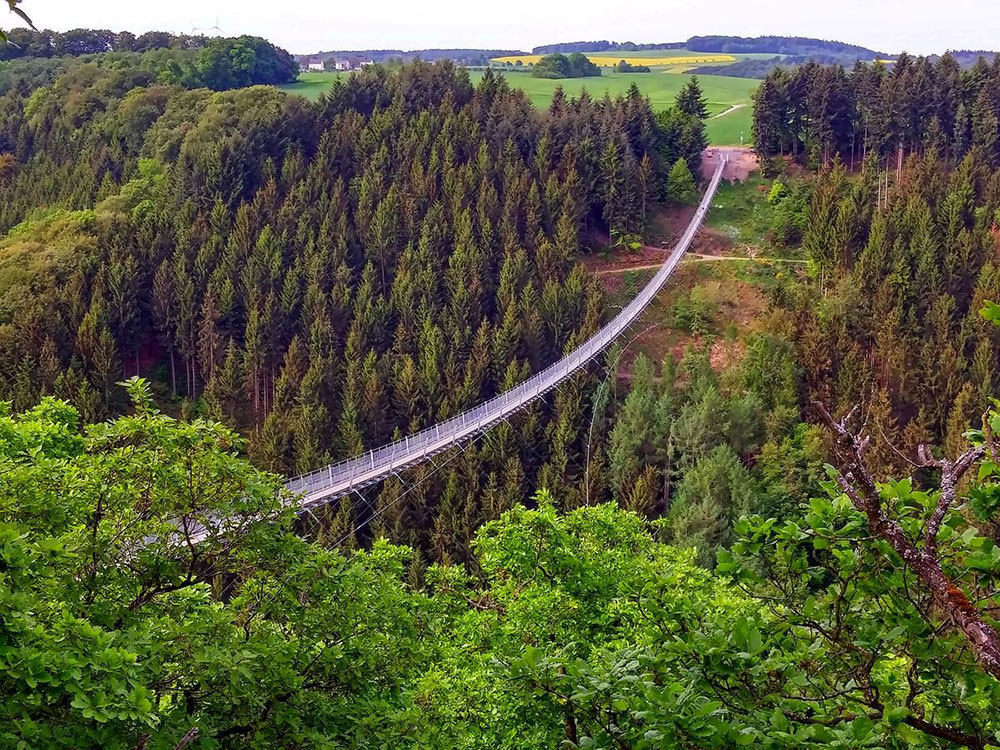
The bridge attracts thrill seekers and those who are not afraid of heights. The “Geierlay Suspension Bridge,” modeled after Nepalese suspension bridges, stretches from one bridgehead to the other. The name was chosen through competition and corresponds to the land registry region in which the bridge is located.
- Munich Residenz
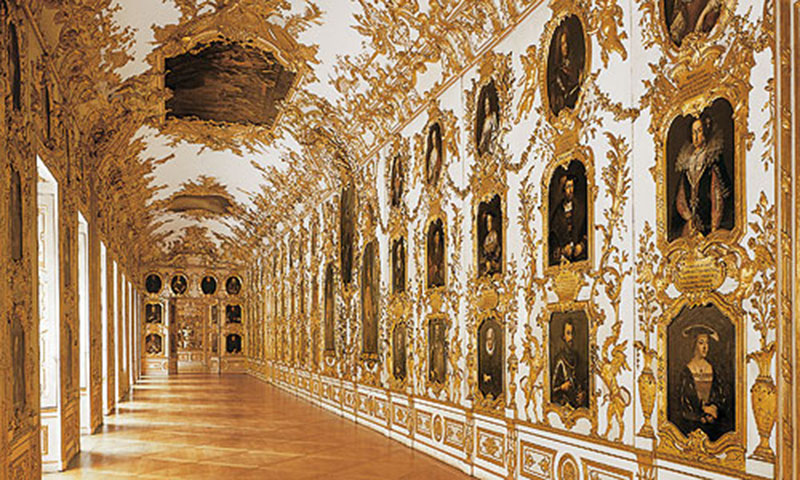
The old royal residence of Bavaria’s Wittelsbach rulers, the Residenz in downtown Munich. The Residenz is Germany’s biggest city palace and is available to the public for tours of its architecture, chamber decorations, and exhibitions of the old royal treasures.
- Rügen Island

Rügen is a German Baltic Sea island. It is famous for its beaches and white chalk cliffs such as the King’s Chair on the Jasmund peninsula. The King’s Chair contains an observation platform and a tourist center with exhibits about Rügen’s natural history.
- Görlitz, Saxony
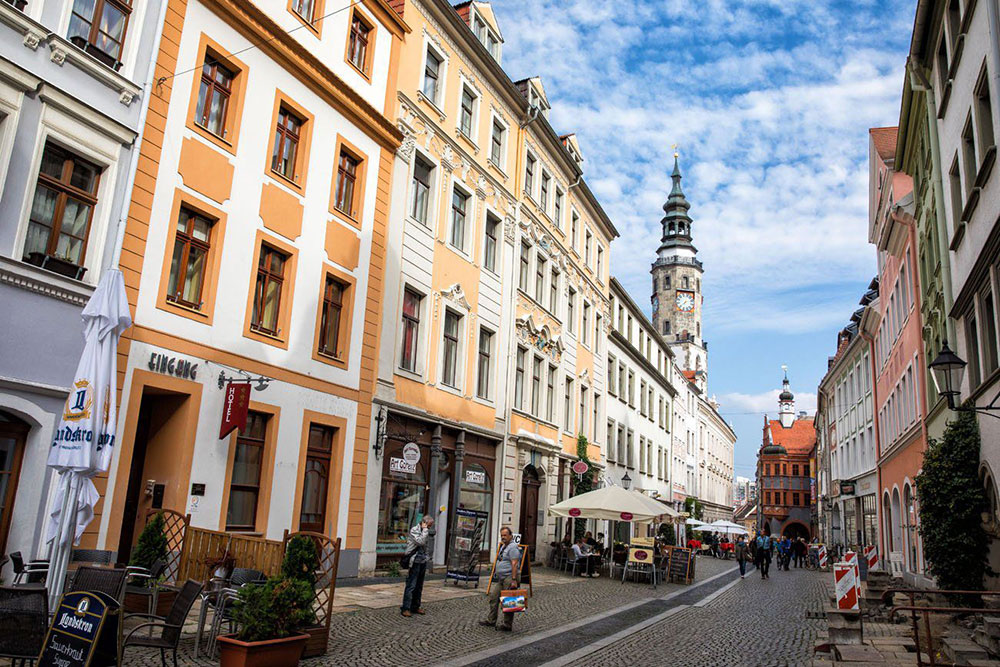
Görlitz is a town in eastern Germany on the border with Poland. It’s famous for its well-preserved ancient town, where buildings from various ages display a variety of architectural styles. St. Peter’s is a late-Gothic church with two steeples and the Sun Organ from the early 1800s.
- Harz National Park, Lower Saxony
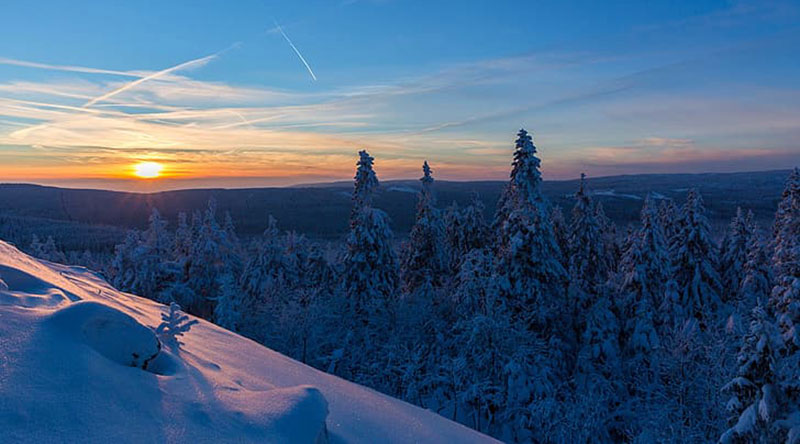
Harz National Park is a wooded reserve in north-central Germany’s Harz mountains that spans the states of Lower Saxony and Saxony-Anhalt. The Bark Beetle Trail and the Dandelion Trail are two themed routes that go through the park’s beech and spruce woodlands.
- BAMBERG, UPPER FRANCONIA, BAVARIA
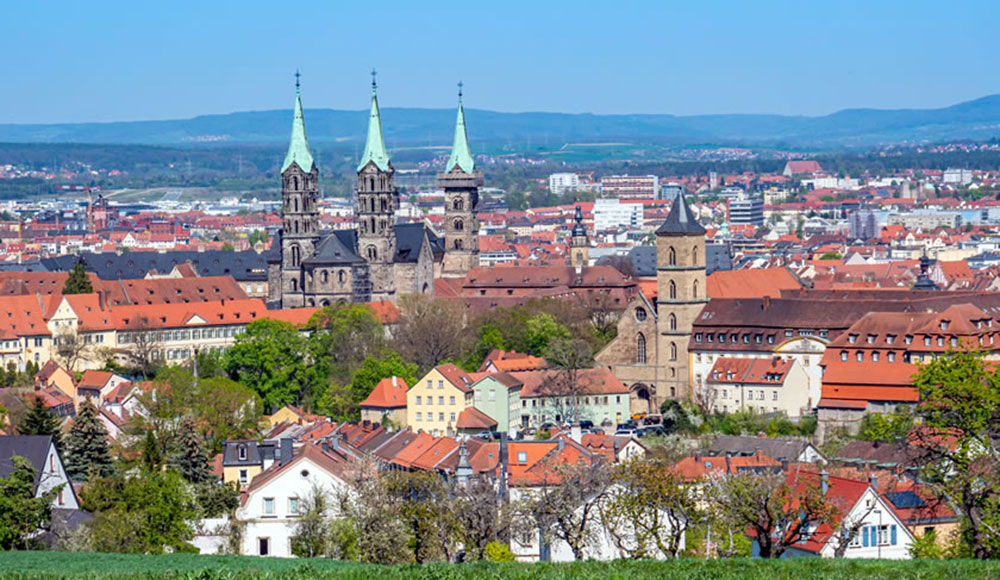
Bamberg is a town in northern Bavaria, Germany, built on seven hills at the confluence of the Regnitz and Main rivers. Its old town has structures from the 11th to the 19th century, notably the muraled Altes Rathaus (town hall), located on an island in the Regnitz and accessible by arched bridges.
- Lake Schrecksee
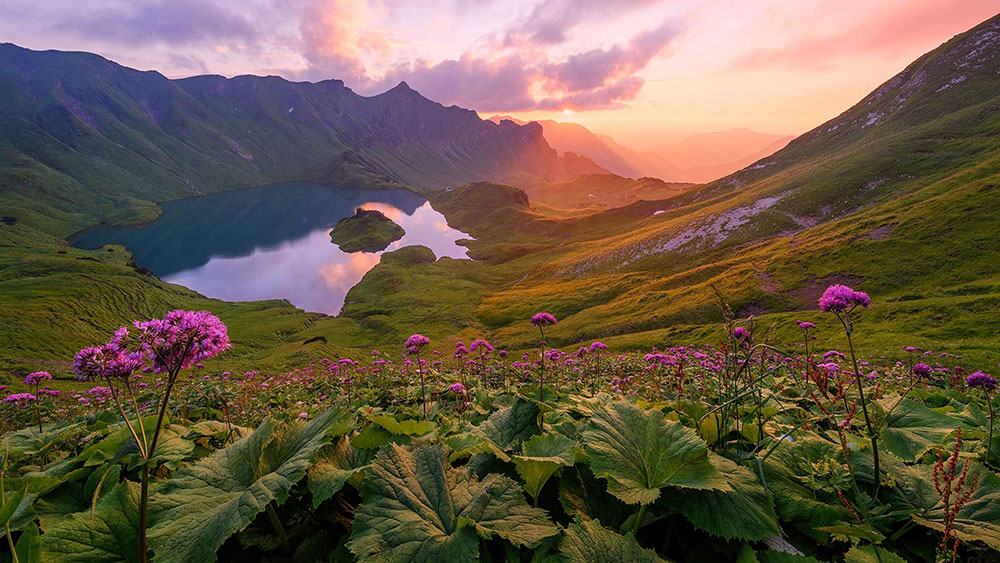
Lake Schrecksee in beautiful Bavaria is the most beautiful alpine lake I’ve ever seen in Germany. It is not just one of the most beautiful lakes in Germany, but also one of the most beautiful lakes in the world.
- LICHTENSTEIN CASTLE, BADEN-WÜRTTEMBERG
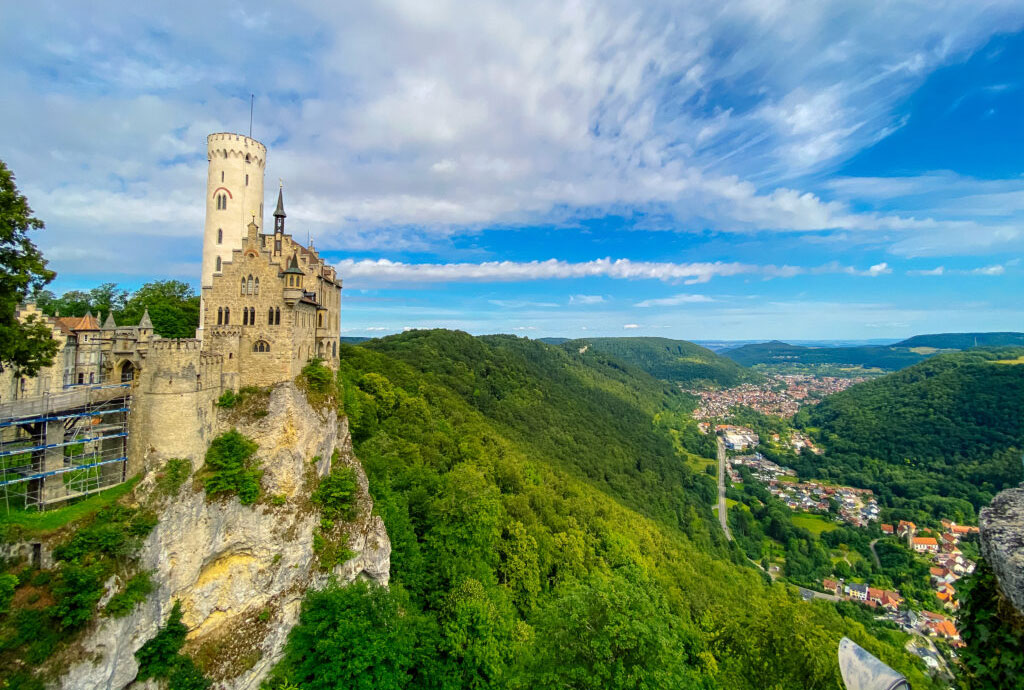
Lichtenstein Castle is a privately owned Gothic Revival castle in southern Germany’s Swabian Jura. Carl Alexander Heideloff created it, and its name means “shining stone” or “bright stone.” The castle looks out over the Echaz valley in Honau, Reutlingen, Baden-Württemberg.
- “SAAR LOOP” AT METTLACH, SAAR RIVER
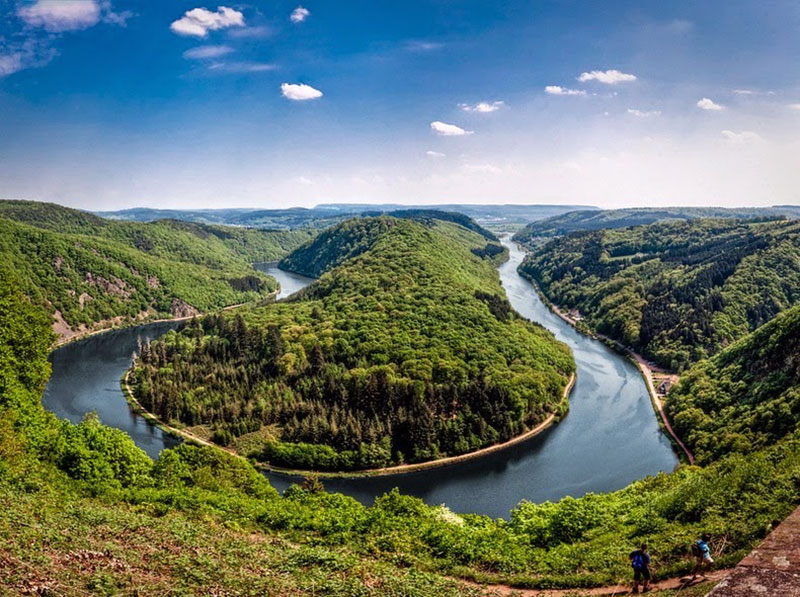
Völklinger Hütte is a UNESCO World Heritage Site located on the banks of the Saar. The Saar goes through Mettlach and the well-known Saar loop. The lower Saar in Rhineland-Palatinate is a significant winegrowing region, producing predominantly Riesling.
- Zwinger Palace, Dresden
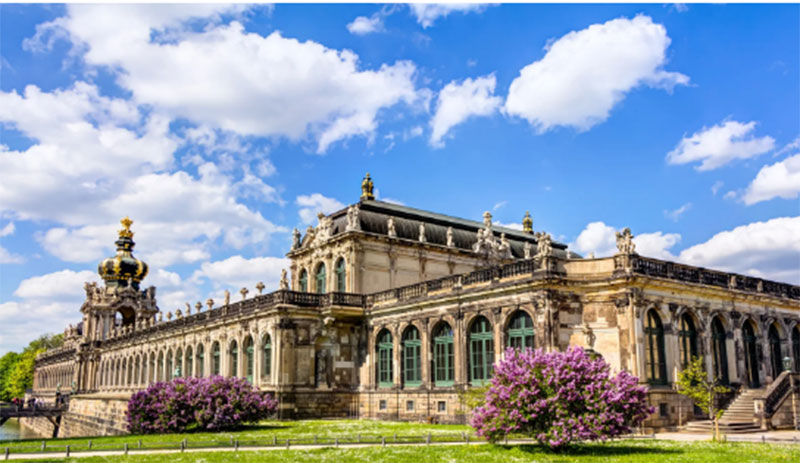
Dresden’s Zwinger Palace was established in 1709 as a site for Saxon aristocratic tournaments and other court sports. Most of the rooms within the palace are now museums, including one of the world’s greatest porcelain collections, the Dresden Porcelain Collection.
- Blautopf, Blaubeuren, Baden-Wurttemberg
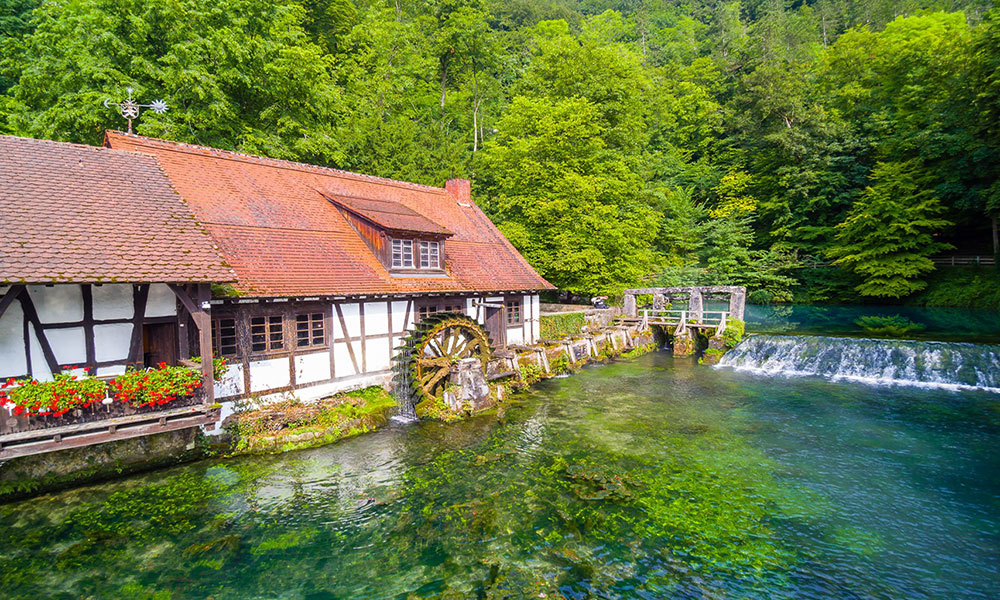
The particularly lovely karst spring, situated in the valley basin of Blaubeuren, is an excellent natural phenomenon with lovely blue and green colors. The Blautopf, located between Blaubeuren and the ancient monastery, is where Germany’s largest underground spring emerges from a cave.
- Tüchersfeld, Pottenstein, Bavaria
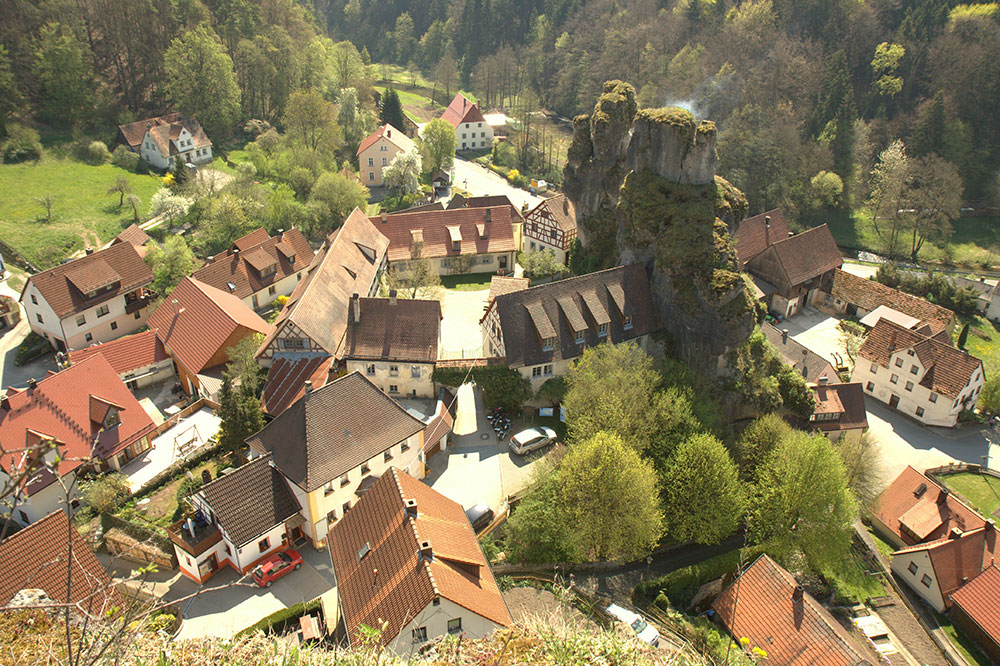
Tüchersfeld is a church hamlet in Franconian Switzerland’s Püttlach valley that is part of the town of Pottenstein. The castles were most likely constructed to control the road and river crossings.
- Partnach Gorge, Garmisch-Partenkirchen, Bavaria
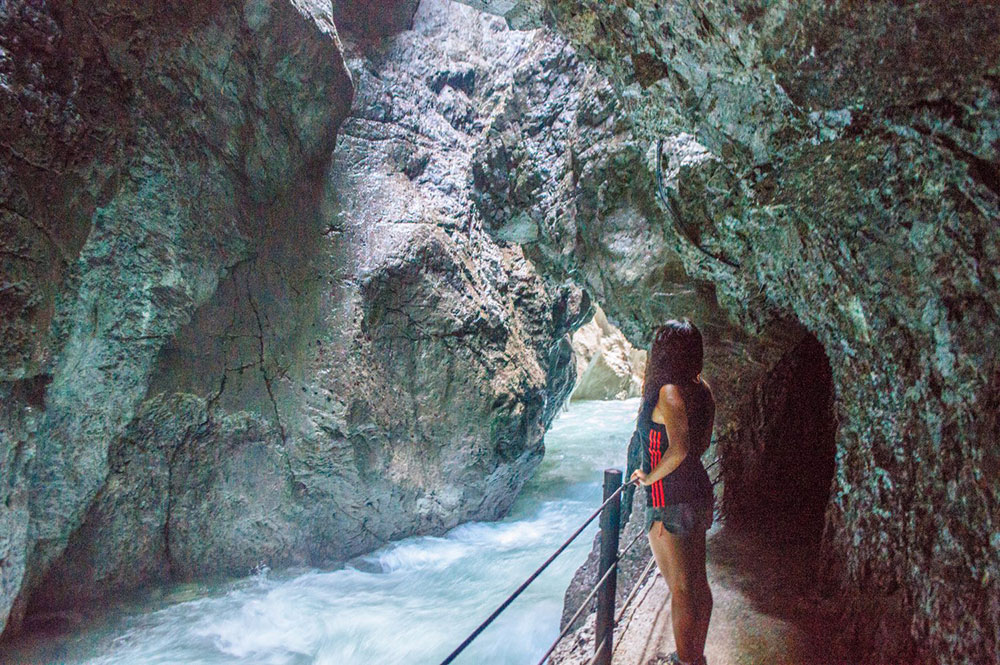
The Partnach Gorge (German: Partnachklamm) is a short river gorge in Garmisch-Partenkirchen, Upper Bavaria, Germany. It’s a breathtaking natural wonder with steep, enormous granite cliffs and icy-blue water. A wonderfully built trail passes through the 700-meter-long Partnach Gorge, providing tourists of all ages convenient access.
- Regensburg
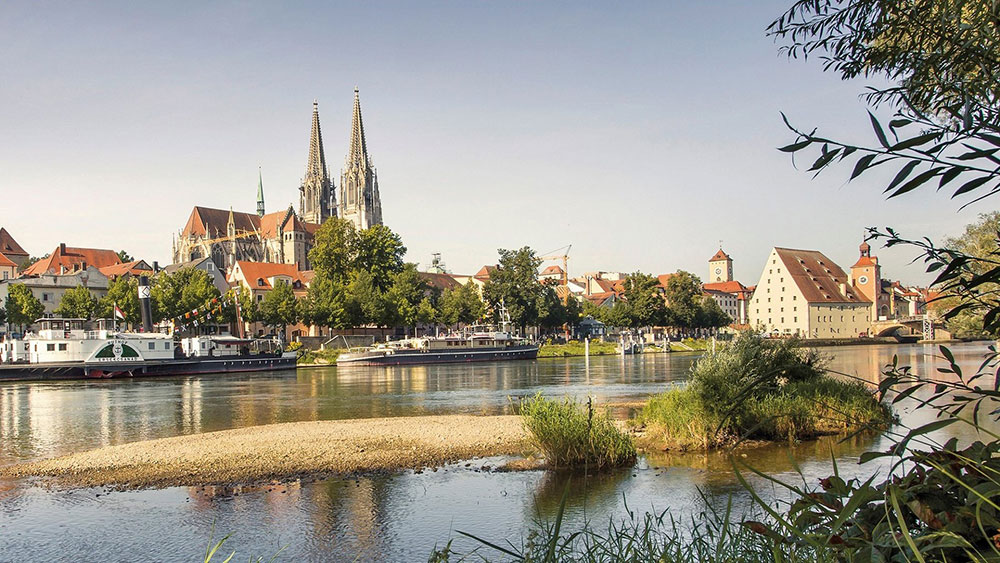
Regensburg is another of Bavaria’s old cities that have been designated as a UNESCO World Heritage Site. Regensburg, one of Germany’s oldest cities, is a popular tourist destination with a diverse choice of hotels and other accommodations.
- Lake Constance
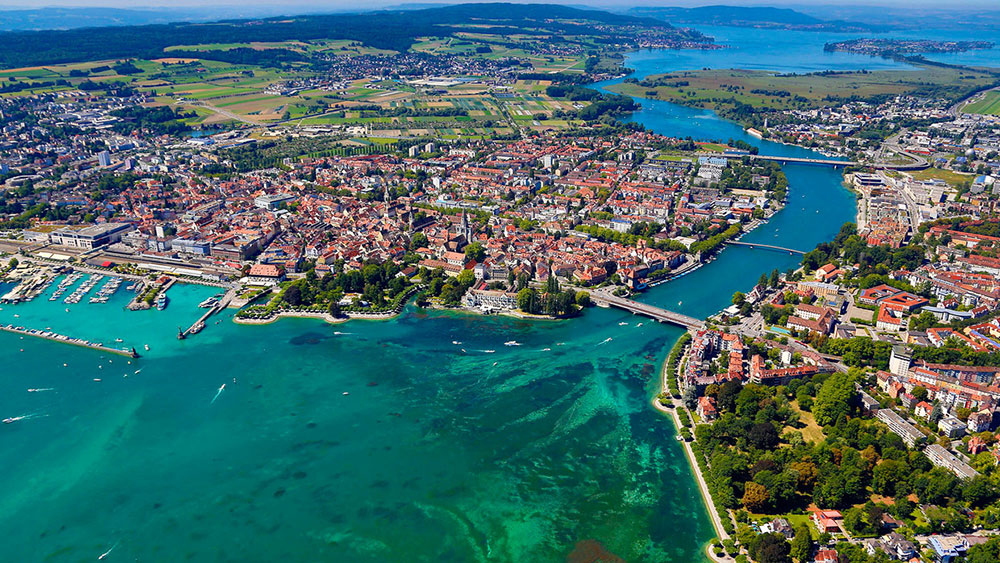
Lake Constance is the biggest lake in Germany, located on the Rhine, at the northern foot of the Alps. The fascinatingly gorgeous lake, which shares borders with Austria and Switzerland, presents a spectacular view with its amazing expanse of water, comprising 270 kilometers of shoreline.
- Leipzig
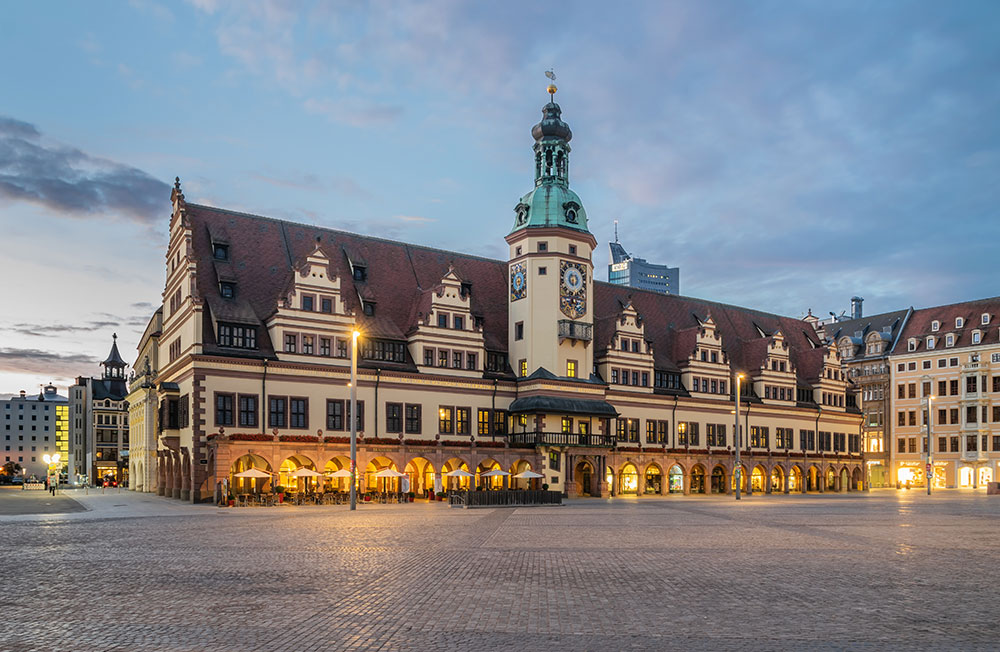
Leipzig is more than simply a vibrant city full of culture, creativity, history, and the spirit of the times. Leipzig is also part of a wide and wonderful area that includes refreshing lakes and streams, fantasy castles and palaces, and miles of exquisite cycling and hiking trails.
We hope you like the content. Please also visit our partners websites – check this website, Volatus Aerospace dji m300, and biodegradable jars wholesale.






